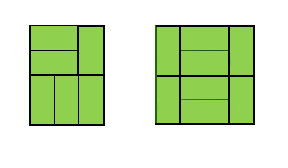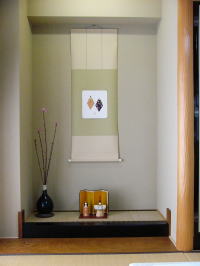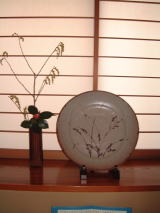and have floors covered with tatami mats.
tatami
Tatami is derived from a verb tatamu which means to fold or to pile.
It shows us that the original tatami was used in different way.
The oldest description is seen in Kojiki,
the oldest history book in Japan written in 712.
In olden times tatami were used only by high status people.
When you see the pictures of "hyakunin isshu "(Japanese traditional cards),
you will find emperors or nobles sitting on tatami
which were used as isolated pieces in the Heian period (794 - 1191).
Tatami are arrenged by the following rules:
1: The corners of four tatami mats should not meet at one point
2: There should not be a line that bisects the tatami layout
either vertically or horizontally
(a line like this resembles an image of harakiri )
3: Only one half size tatami should be used per room.
In the old days, the arrangement were changed
depending on the ceremonies.
But, Now in all the houses, tatami are always set like the examples in yellow
for auspicious ceremonies..


